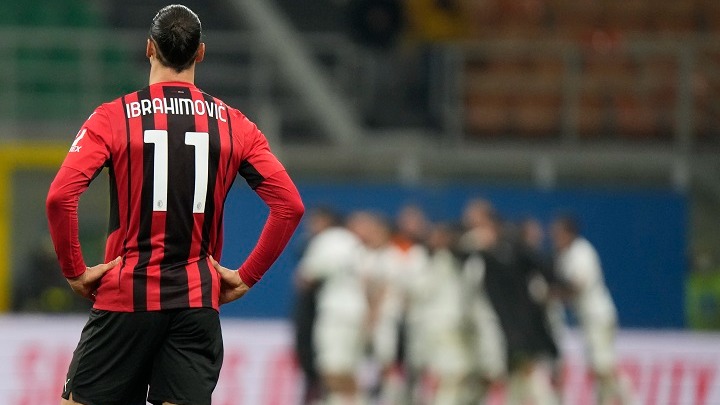Architect of the exhibition Dreams of Freedom. Romanticism in Russia and Germany “ Daniel Libeskind spoke with Sergei Khodnev.
– What do you primarily associate with the word “romanticism” – a specific name, a specific work?
– I would say that first of all there is a feeling that we live in a world that was shaped by romanticism. We are part of it. Everything that emerged then determined our existence in the 21st century. So this exhibition is not an appeal to the past, but to the present.
– So you perceive the entire XX century as a continuation of romanticism?
– Yes, definitely! Romanticism set a huge number of themes that then remained on the surface. Whether it’s a search for identity, or a broken reality, or light and dark. We were molded by the art that is partly presented here at the exhibition.
– And what is your main reference point? The artistic dimension of romanticism, political, social?
– All at once. The idea of freedom is in some way the heart of the exhibition, and I wanted first of all to involve visitors, so that for them it was not just an academic examination of some irrelevant things from the past. They should be aware that their own feelings, emotions, their look, their future, in the end, are important here.
– How was the design process of the exhibition built?
– I started with a basic image that is very important for romanticism: it is a spiral as a trajectory of movement of the mind and soul. There are two spirals here, because Russia and Germany, more precisely, Saxony, are represented. But since Russian romanticism and German romanticism are twins, reflections of each other, or even echoes of each other, these two spirals intersect. And then I cut the spirals – to create a geometric sense of the distance between Russia and Germany, especially between Moscow and Dresden. This resulting axis sets the tone for the through internal movement, but also the outward look, which is also part of the exhibition. From time to time, something external in relation to the exposition opens to you in this opening – say, a wall, white or black. And this, of course, is also a romantic idea: we live in a complex world. Not in the old world of classicism, the world of the Enlightenment, but in a world full of hieroglyphs, complexity, political contradictions, what is happening to you here and now.
– How convenient were for this space here and in Moscow?
– We had to work with very ordinary spaces – these are, in fact, boxes. It was necessary to revive them. I had to work with a fantastic team both here and at the Tretyakov Gallery, and everyone was very supportive of my idea that the exhibition should not be just a passive passage: I looked at the paintings, read the labels and then went to drink coffee. It must be an emotional experience. And here it arises – you can even get lost, get lost and then find your own way out. So it’s about the individual. Not about the mass, not about the crowd. Everyone finds their own way and their own way to understand this difficult era.
– But what came first? What exactly did you start from in terms of the program?
– I would say that my first planning idea was my very love for these paintings. Otherwise it would have been impossible to make an exhibition.
– In other words, did you start by studying the paintings?
– Of course. I knew the work of many artists, both German and Russian, though not all. And the idea of seeing them together, to see, for example, Caspar David Friedrich and Venetsianov next to me, inspired me a lot. ?
– By itself! Listen, how can you understand Malevich, Lissitzky, Kandinsky, constructivism without understanding the context from which it all came out? An artistic context, but also a political one. And it’s the same with Germany. And to put them side by side is to understand how small the world really is, despite the divisions, borders, political difference.
– But the spatial sensation of the two exhibitions is different.
– Naturally. They’re twins – but, you know, as Joyce said, losing a brother is as easy as losing an umbrella. They are different because the spaces are completely different. Different conditions, different people around. This is not some kind of blank that can be reproduced anywhere completely mechanically. Not to mention the fact that here and there a different selection of painting, a different scale. Everything had to be rethought depending on the genius loci.
– Why did you abandon the axes-avenues that were in Moscow?
– They are!
– But they are completely different.
– Well, yes, in Moscow they were wide. So is Russia wide! Huge, endless. And the exhibition space was twice as large. It was necessary to adapt the project, but there was no handicap in this – just a separate artistic task. complex, ephemeral thing? Unlike a full-fledged architectural work.
– You see, sometimes it is the ephemeral that turns out to be even more important and durable. And it continues to live even after physical disappearance. It doesn’t seem to me that ephemerality makes the architect’s task any less difficult. All the same, everything depends on our perception, on consciousness. For example, great historical figures are still in our minds, although we have never seen them with our own eyes. Or take a theatrical performance – it’s also ephemeral.
– Well, for example, in Deutsche Oper I put on “St. Francis of Assisi” by Olivier Messiaen. There I not only did the sets, but also directed – I just didn’t conduct. It was the idea of a theater, but Francis is in some way an homage to Messiaen to Wagner, so a total work of art, for which one person is in charge, was a rather appropriate theatrical decision. – As an architect, you worked a lot in Dresden, where the legacy of socialist urban planning is still very noticeable. What do you think of it?
– After the devastation of World War II, it was necessary to build quickly and in large quantities – everything is clear here. I can only be glad that I was not an architect at the time. Maybe I would be doomed to build such terrible buildings. But we live in a different time. In a more open society. We understand the limitations of modernism and the slogans of either the Bauhaus or the VKHUTEMAS. We understand that they are not suitable for human existence – you cannot build it on a square, circle and triangle. It’s more complicated.
They did not take into account the most important thing – the human soul. We proceeded from the fact that we are machines and should be built into the machine life. But people understand that they are not machines. We don’t want to be machines. We have families, we have memories, we have dreams. This is where architecture should develop – towards humanistic content.
– But both the Bauhaus and VKHUTEMAS also had a romantic background.
– Of course, and this is a great achievement, but, you see, the utopia that has been realized turns out to be a nightmare. We must appreciate the beauty of these ideas and some the works that they brought to life, but ideologically these are just formulas that do not work. You don’t have to try to be modernists – you just need to be modern. Without “isms”, which are already too many. Otherwise, it will be a historical nightmare.
– The words “historical nightmare” are also great for your work.
– Surely! But I have it in a positive sense: if you had a nightmare, then you need and can wake up.
– I can’t help but ask about the meanings: after all, romanticism is not only dreams of freedom, it is also aestheticized lack of freedom, ideological freezes, etc.
– You are absolutely right, there was great ambivalence. A brave new world and at the same time an appeal to the mythical paradise of the past. But that is what makes him so perfect. This rift, this doubt, is where the truth is – in the legendary past or in the uncertain future. This is also a very modern state. There can be no order without disorder, these are two sides of human society, like day and night, “yes” and “no”, plus and minus. But do you know what Paul Valerie said? “Two things threaten civilization: order and disorder.” We need to find something alternative, some middle way. And that’s what our exhibition is about.
Note: This article have been indexed to our site … We do not claim legitimacy, ownership or copyright of any of the content above. To see the article at original source Click Here











